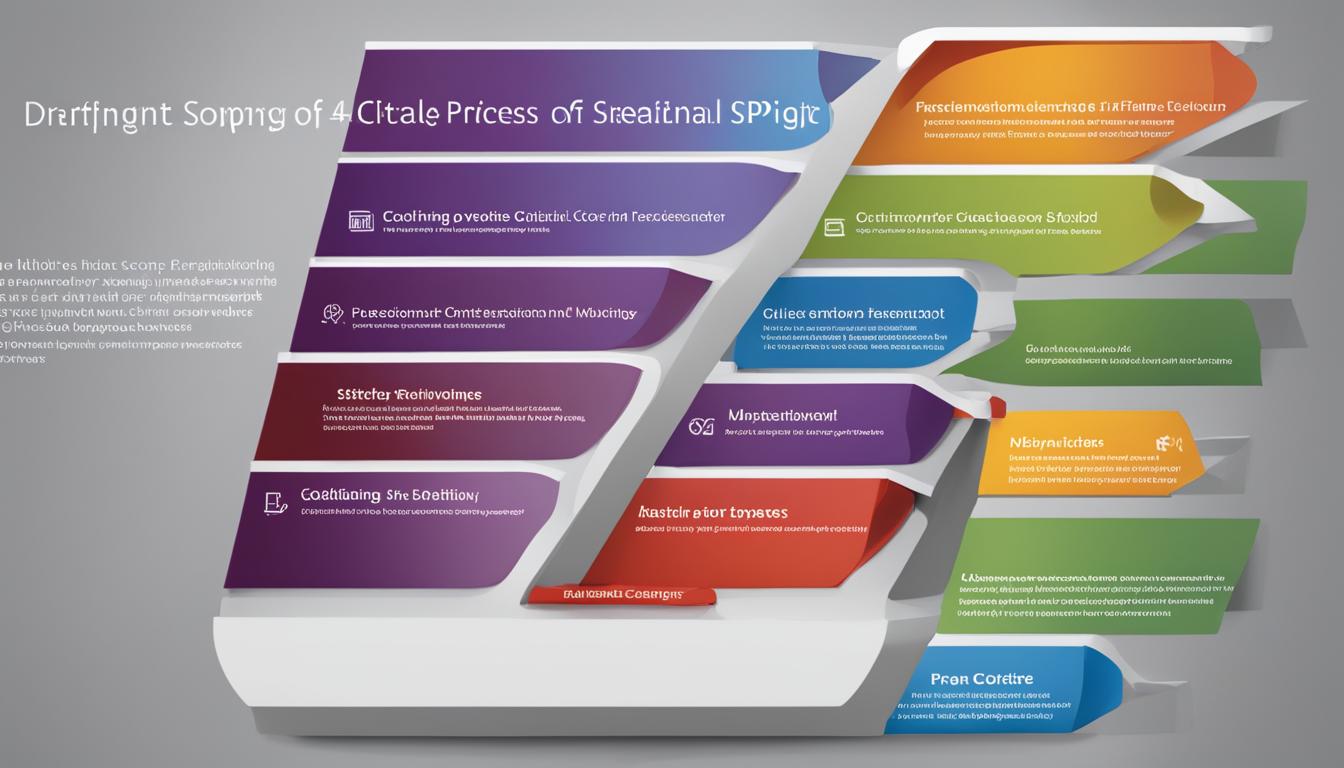A standard operating procedure (SOP) is a crucial tool in the field of Information Technology (IT). It provides clear-cut directions and detailed instructions needed to perform specific tasks consistently and efficiently. SOPs aim to achieve uniformity in execution, reduce miscommunication, and adhere to regulatory standards. In this guide, we will explore the benefits of having standard operating procedures in the IT industry and provide you with guidelines for writing and developing effective SOPs.
Contents
- 1 Understanding Standard Operating Procedures in IT
- 2 Benefits of Implementing SOPs in the IT Industry
- 3 Tips and Best Practices for Writing SOPs in IT
- 4 Structure and Key Elements of an IT SOP
- 5 Conclusion
- 6 FAQ
- 6.1 What is a standard operating procedure (SOP) in the field of information technology?
- 6.2 What is the purpose of an SOP in the IT industry?
- 6.3 Why are SOPs important in maintaining the operational integrity of an IT organization?
- 6.4 What are the benefits of implementing SOPs in the IT industry?
- 6.5 What are the steps to write an effective SOP for IT?
- 6.6 What are some tips and best practices for writing SOPs in IT?
- 6.7 What should be included in an IT SOP?
- 7 Source Links
Key Takeaways:
- Learn how to write an effective SOP for Information Technology (IT).
- Understand the importance of SOPs in maintaining operational integrity, consistency, and efficiency in the IT industry.
- Discover the benefits of implementing SOPs, including adherence to best practices and regulatory compliance.
- Follow step-by-step instructions to write an effective SOP for IT.
- Explore tips and best practices for writing SOPs in IT, including training employees and revisiting SOPs regularly.
Understanding Standard Operating Procedures in IT
In this section, we will delve deeper into what an SOP is and its purpose in the IT industry. An SOP, short for Standard Operating Procedure, goes beyond being just a procedural document. It serves as a reference guide for problem-solving, a tool for ensuring safety, and a mechanism for standardizing performances across the organization.
An SOP in IT plays a crucial role in maintaining the operational integrity of an IT organization. It ensures consistency and efficiency in executing tasks, providing quality assurance and enabling proper onboarding and training of employees. SOPs also preserve organizational knowledge, reduce misunderstandings, and ensure regulatory compliance.
By following SOPs, IT professionals can streamline their operations and promote efficiency within the organization. Let’s explore the importance of SOPs in more detail.
“SOPs serve as a reference guide for problem-solving and a tool for ensuring safety in the IT industry.”
Benefits of Implementing SOPs in the IT Industry
Implementing standard operating procedures (SOPs) in the IT industry offers a multitude of benefits to organizations. SOPs ensure adherence to best practices, which are actionable and hierarchical steps that guide employees in their daily tasks. By following established procedures, employees can achieve consistent and efficient outcomes, reducing delays and miscommunication in operations.
SOPs also enhance the overall quality of work by providing detailed instructions for effective and efficient task completion. With clear guidelines in place, employees can consistently deliver high-quality results, ensuring customer satisfaction and organizational success.
In addition to improving performance, SOPs facilitate proper onboarding and training of new employees. By documenting step-by-step procedures and best practices, SOPs serve as valuable resources for training programs, enabling new hires to quickly learn and adapt to their roles within the organization.
Furthermore, SOPs contribute to the preservation of organizational knowledge. By capturing and documenting the expertise and experience of employees, SOPs ensure that critical information is retained even when individuals leave the company. This knowledge retention promotes continuity and enhances the organization’s ability to adapt to changing circumstances.
SOPs also play a crucial role in reducing misunderstandings and ensuring regulatory compliance. By providing clear and concise instructions, SOPs minimize the risk of errors and promote consistency in meeting regulatory requirements. This not only helps organizations avoid penalties and legal issues but also fosters trust among stakeholders.
Lastly, implementing SOPs improves safety in IT operations. By outlining specific procedures and protocols, SOPs enhance risk management and promote a safe working environment. This is particularly important in the IT industry, where data security, infrastructure maintenance, and system operations require strict adherence to protocols to mitigate potential risks.
In summary, the implementation of SOPs in the IT industry yields numerous benefits. It ensures adherence to best practices, establishes consistency and efficiency in operations, enhances the overall quality of work, facilitates proper onboarding and training, preserves organizational knowledge, reduces misunderstandings, ensures regulatory compliance, and improves safety. By leveraging the power of SOPs, IT organizations can optimize their performance and achieve sustainable success.

With these steps, you are well-equipped to write an effective SOP for IT. Remember to determine your goals, gather accurate information, develop a clear and concise SOP, review and approve it, and finally, train and implement it within your organization. By following this process, you can create SOPs that improve efficiency, promote consistency, and contribute to the overall success of your IT operations.
Tips and Best Practices for Writing SOPs in IT
When it comes to writing standard operating procedures (SOPs) for the IT industry, following best practices is essential. These practices ensure that your SOPs are effective, easy to understand, and provide clear guidance for employees. Here are some tips to help you create SOPs that drive efficiency and accuracy in your IT operations:
- Keep it short and concise: Avoid lengthy, complicated SOPs that are difficult to follow. Instead, focus on brevity and clarity. Use concise language and break down complex processes into simple, step-by-step instructions.
- Utilize templates for consistency: Templates provide a consistent framework for your SOPs. They help maintain a standardized format and keep the content organized. Using templates also saves time and effort when creating multiple SOPs.
- Involve relevant stakeholders: Collaboration is key to creating effective SOPs. Involve IT professionals, managers, and other relevant stakeholders in the development process. Their input will ensure that the SOPs reflect real-world scenarios and address specific operational needs.
- Provide clear and actionable instructions: Clarity is crucial in SOPs. Use simple language, avoid jargon, and provide clear instructions that leave no room for interpretation. Include visuals, diagrams, or flowcharts when necessary to enhance understanding.
- Regularly review and update SOPs: SOPs should not be static documents. Regularly review and update them to incorporate feedback, new best practices, and changes in technology or regulations. This ensures that your SOPs remain relevant and aligned with current industry standards and practices.
Training Employees on SOPs
Writing SOPs is just the first step; effectively training employees on them is equally important. Consider the following tips for successful SOP implementation:
- Provide comprehensive training sessions: Conduct training sessions to familiarize employees with the SOPs. Explain the purpose, importance, and step-by-step procedures outlined in the SOPs. Offer hands-on exercises or simulations to reinforce learning.
- Create user-friendly training materials: Develop user-friendly training materials, such as presentations, videos, or interactive modules, that align with the SOPs. Make these materials easily accessible to employees, ensuring they can reference them at any time.
- Encourage feedback and questions: Create an environment where employees feel comfortable seeking clarification and providing feedback on the SOPs. Address any concerns or questions promptly to ensure understanding and compliance.
- Periodically assess comprehension: Regularly assess employees’ understanding of the SOPs through quizzes, assessments, or practical evaluations. This helps identify areas that may require additional training or revisions to the SOPs.
Implementing and Revisiting SOPs
Implementing SOPs is an ongoing process that requires consistent monitoring and improvement. Consider the following best practices for effective implementation and revisiting of SOPs:
“Regularly review and update SOPs to incorporate feedback, new best practices, and changes in technology or regulations.”
- Assign responsibility: Designate individuals or teams responsible for overseeing the implementation and maintenance of the SOPs. Ensure they have the authority to make necessary updates or revisions as needed.
- Establish performance metrics: Define performance metrics to measure adherence to the SOPs. This allows you to monitor compliance, identify bottlenecks, and continuously improve processes.
- Encourage continuous improvement: Foster a culture of continuous improvement by encouraging employees to provide suggestions for enhancing the SOPs. Regularly solicit feedback, brainstorm ideas for improvement, and implement changes when necessary.
- Regularly communicate updates: When revising SOPs, communicate the changes effectively to employees. Clearly highlight the modifications and provide training or additional resources to ensure a smooth transition.
By following these best practices for writing, training, implementing, and revisiting SOPs, you can optimize your IT operations and ensure consistency, efficiency, and compliance across your organization.

In the next section, we will explore the structure and key elements of an IT SOP, providing you with further guidance on creating comprehensive and effective SOPs for your IT operations.
Structure and Key Elements of an IT SOP
An IT Standard Operating Procedure (SOP) is a crucial document that outlines the step-by-step instructions for performing specific tasks in the field of Information Technology. To ensure its effectiveness, an IT SOP should follow a clear structure and incorporate key elements that promote consistency and efficiency.
The typical structure of an IT SOP includes the following sections:
- Introduction: This section provides an overview of the SOP, its purpose, and the scope of the documented process.
- Scope and Purpose: Clearly define the boundaries of the procedure and state the objectives it aims to achieve.
- Responsibilities and Roles: Identify the individuals or teams involved in executing the procedure and define their responsibilities and roles.
- Step-by-Step Procedures: Detail the sequential steps required to perform the task accurately. Use concise language and provide clear instructions to ensure understanding.
- References: Include any relevant documentation, resources, or references that support the SOP and provide further guidance to the users.
Key elements that should be incorporated into an IT SOP include:
- Clear and Concise Instructions: Use simple and precise language to ensure that the instructions are easily understandable and executable.
- Relevant Documentation and Resources: Include any necessary forms, checklists, or other supporting materials to aid in the execution of the task.
- Metrics for Tracking Performance: Define measurable metrics or key performance indicators (KPIs) to evaluate the effectiveness and efficiency of the procedure.
- Feedback Mechanism: Establish a process for users to provide feedback and suggest improvements to the SOP, fostering continuous improvement and adaptation.
To assist in the development of an IT SOP, it can be helpful to provide examples and templates specifically tailored to the IT industry. These resources can serve as guides, offering valuable insights and accelerating the writing process.

By following the recommended structure and incorporating key elements in an IT SOP, organizations can ensure consistency, efficiency, and adherence to best practices in their IT operations.
Conclusion
In conclusion, the implementation of Standard Operating Procedures (SOPs) is essential in the IT industry. SOPs provide clear instructions, ensuring consistency and efficiency in operations. By adhering to best practices, IT professionals can benefit from streamlined workflows, improved quality assurance, and regulatory compliance.
Writing an effective SOP involves several key steps. Firstly, it is crucial to determine the goals and scope of the SOP, gather relevant information, and develop clear and concise instructions. Regular reviews and approvals, along with proper training and communication, are also vital for successful SOP implementation.
By following best practices, structuring SOPs effectively, and including essential elements such as clear instructions, relevant documentation, and performance metrics, IT organizations can create SOPs that optimize their operations and drive efficiency. Keep in mind that regularly revisiting and updating SOPs based on feedback and new best practices is crucial for continuous improvement.
FAQ
What is a standard operating procedure (SOP) in the field of information technology?
A standard operating procedure provides clear-cut directions and detailed instructions needed to perform a specific task or operation consistently and efficiently in the field of information technology.
What is the purpose of an SOP in the IT industry?
An SOP serves as a reference guide for problem-solving, a tool for ensuring safety, and a mechanism for standardizing performances across the organization.
Why are SOPs important in maintaining the operational integrity of an IT organization?
SOPs are important in maintaining the operational integrity of an IT organization by ensuring consistency and efficiency, providing quality assurance, enabling proper onboarding and training, preserving organizational knowledge, reducing misunderstandings, and ensuring regulatory compliance.
What are the benefits of implementing SOPs in the IT industry?
Implementing SOPs in the IT industry ensures adherence to best practices, establishes consistency and efficiency in operations, enhances the overall quality of work, facilitates proper onboarding and training of new employees, preserves organizational knowledge, reduces misunderstandings, ensures regulatory compliance, and improves safety in IT operations.
What are the steps to write an effective SOP for IT?
The steps to write an effective SOP for IT include determining goals for creating an SOP, gathering information, developing the SOP, reviewing and approving it, and implementing and communicating it within the organization.
What are some tips and best practices for writing SOPs in IT?
Some tips and best practices for writing SOPs in IT include keeping the SOPs short and concise, utilizing templates for consistency, involving relevant stakeholders in the development process, providing clear and actionable instructions, regularly reviewing and updating the SOPs, training employees on the SOPs, and revisiting them to incorporate feedback and new best practices.
What should be included in an IT SOP?
An IT SOP should include clear and concise instructions, relevant documentation and resources, metrics for tracking performance, and a feedback mechanism. Providing examples and templates of SOPs in the IT industry can also be helpful in guiding the writing process.




